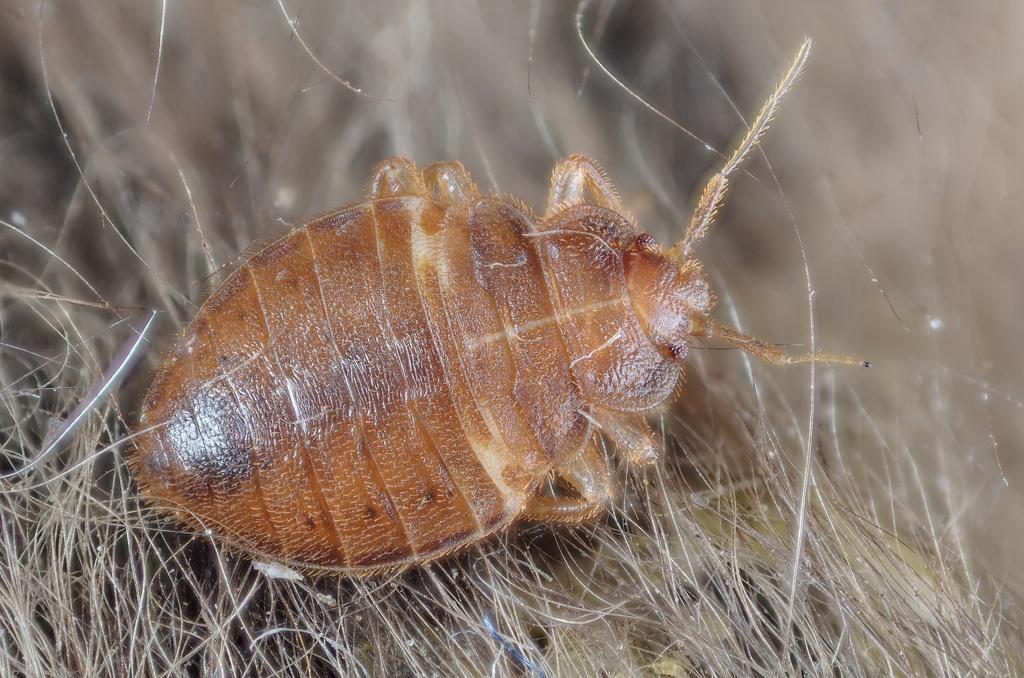
Larvae of the bed bug – Cimex lectularius – on the fur of one of its hosts, a bat.
Scale : bug length ~ 3 mm
You might think you know everything there is to know about bed bugs – they like to feed on your blood while you sleep, they cause red itchy bumps, and they’re hard to exterminate. But these little parasites hide many secrets that you might not be aware of. Check out these six interesting facts about bed bugs.
- They don’t just live in beds
While beds in homes and hotels are the places you’ll most frequently find them, bed bugs can thrive anywhere that humans spend time. Your sofa, wardrobe, suitcase, drawers or carpets are perfect hiding places, and bed bugs are also found in trains, busses, movie theatres, schools, retail stores, and even hospitals. Nowhere is truly safe from these adaptable creatures.
- They are elusive
Although they’re not completely nocturnal, bed bugs have a strong survival instinct and know to stay out of sight during daylight hours. They hide under mattresses, behind baseboards or under wallpaper. Then when night falls, they’re lured out of their hiding places by our body heat and the carbon dioxide we exhale while we sleep. When they bite, their saliva acts as an anaesthetic, making the feeding process painless so we don’t wake up.
- They are survivors
Bed bugs are hardy creatures that can live for several months without feeding. This allows them to survive for a long time in suitcases or furniture, waiting for the next host to arrive. They can also tolerate freezing conditions and temperatures up to 120°F, as well as being resistant to most common pesticides. This means they’re hard to eliminate using DIY methods, and professional pest control is often the most effective treatment.
- A clean home won’t keep them away
Keeping your house clean and tidy is a great way to avoid pests like cockroaches and rats. But bed bugs don’t care how clean or dirty your home is. They only want to feast on your blood, so the cleanest sheets in the world are no deterrent. Even the most exclusive hotels can succumb to a bed bud infestation.
- They like to keep a routine
Bed bugs follow a repetitive feeding pattern, emerging from a secluded spot at a predictable time to feed for 5 to 10 minutes, often creating a tell-tale line or cluster of bite marks on your body. They can consume seven times their bodyweight in one feeding session. Once they’re full, they creep back to their hiding spot and wait for up to 10 days while digesting the meal, mating, and laying their eggs.
- They reproduce quickly
Bed bugs have a lifespan of approximately one year, but a female bed bug can lay up to five eggs per day, and hundreds of eggs during her lifetime. Each bed bug takes about 10 days to hatch and six weeks to develop into an adult. The hatchlings are so tiny they can crawl through stitch-holes in your mattress. In heavily populated areas with plenty of human hosts, bed bug infestations can spread rapidly. And although bed bugs are more prevalent in dense urban locations, they can just as easily be found in rural towns and villages.
If you really want to get rid of bed bugs today try SayByeBugs! It was developed as a safe and highly effective alternative among a sea of products that rarely deliver on their promises.








